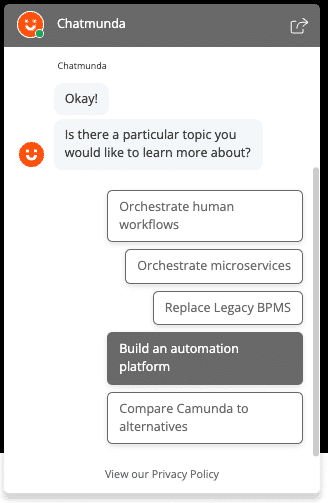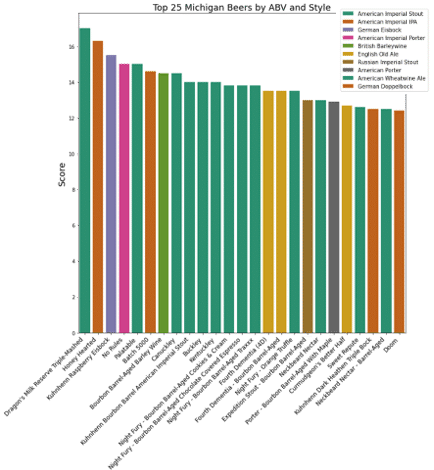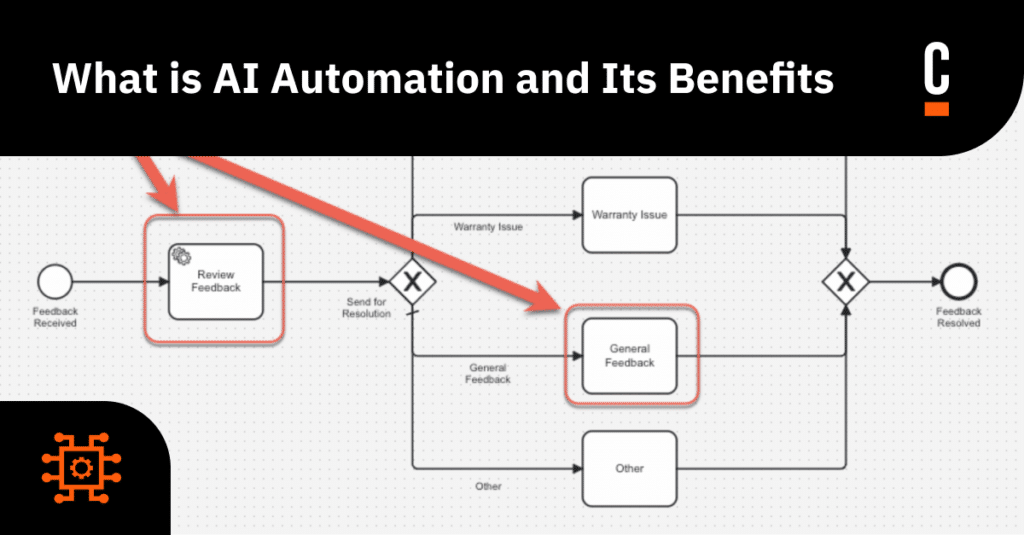Everyone is talking about it—Artificial Intelligence (AI)—and how we can take advantage of what it can offer to our business. Well, one way is to implement AI automation, which allows you to use artificial intelligence and technology to automate repetitive tasks that humans usually perform.

By combining machine learning (ML), natural language processing (NLP), various algorithms and models, and other AI methods, you can enable systems to take on those traditional human tasks by guiding the individual doing the task or even automating the task altogether.
How can my organization achieve these AI automation benefits?
AI automation has several benefits that can help businesses in several ways. Let’s discuss some of those added values.
Cost savings
Everyone loves cost savings. As mentioned, with AI automation, you are automating repetitive human tasks which can help reduce labor costs. Those previously responsible for these tasks can move on to more valuable duties within the organization.
Let’s assume that you produce a product and you need to field customer service calls. Some of these are questions about their product warranty, some are questions about how things work, and others might be feedback about shopping online, or even something else completely. In the past, you have had an individual who reviews all these customer messages and routes them to the proper department for a response.
With AI automation, you could send these communications to an engine to have it search for certain information—for example, searching for the word “warranty”—and then automatically route these messages to the correct department. These previously responsible individuals can be reallocated to higher-value tasks.
With the addition of AI automation to your organization, you can allocate resources more efficiently and effectively.
Scalability
In any industry, there are peaks and valleys in the volume of work that needs to be processed. With AI automation in your processes, you can scale to take on growing volumes and decreasing values without significant changes in your costs or your resources.
This is very important when you have a surge in volume. When you are in a position of rapid growth or fluctuations in demand, it is particularly valuable to have the ability to scale effectively and without significant costs.
For example, if you are a Property & Casualty (P&C) insurer and there is a weather event—like a tornado or flood, often called a CAT (for catastrophe), you will have increased volume for a while. In the past, you would likely need to hire additional staff or even increase your computer power to handle the increased volume. If you have a claims process that automates some of those repetitive tasks, you can save the costs associated with this additional personnel and process your claims more efficiently.
Customer service
How many times have you gone to a bank website or a software vendor website and been forced to pick up the phone and process through a series of ones, twos, and threes to get to a person who might be able to help you? Enter the chatbots and virtual assistants that can ask a few questions to get you to the correct person faster and more efficiently. We live in a digital age and many individuals just want a question answered quickly and efficiently without having to make a phone call or deal with a person.
This avenue can also be used to be a first responder for customer inquiries and support requests. If the customer cannot be immediately helped by these AI-powered agents, then they can be queued to a customer service agent for additional assistance.
Either approach provides faster response times and can improve your overall customer satisfaction. Even Camunda has a chatbot—meet “Chatmunda.”



Increased efficiency
As you can imagine, if you can automate repetitive tasks, you can streamline your processes. This not only reduces the time and effort required to complete entire processes, but it can provide other benefits as well. With the efficiencies provided by AI automation, you can provide faster turnaround times for your customers—both internal and external, increased productivity, and even cost savings.
You can start to address improving your service level agreements (SLAs) and KPIs (key performance indicators) by increasing the efficiency of your processes as well. These metrics provide a transparent assessment of your business’ performance. With this information, you are enabled to find strengths and then locate areas of improvement. By focusing your efforts on the areas of improvement and implementing specific enhancements, you can positively influence the overall performance of your processes.
Innovation
I’m sure your organization is looking at strategic initiatives and ways to drive innovation and competitive advantages that can make your company more competitive in the marketplace. With the implementation of AI automation to automate human routine tasks, you can free up those human resources so they can focus on being more creative and developing more strategic initiatives.
Reducing errors
No one is perfect, we try, but we are humans and that means we can make mistakes even when we are working hard not to do so. However, if you implement the automation of some tasks, AI can help to reduce the risk of these human errors.
By minimizing human inaccuracies, you can improve the quality of your work with more correct results. This means you can improve customer satisfaction and be more confident that your data is accurate.
Data analysis
Without reviewing and analyzing all our data, we really cannot get a good understanding of what is happening both inside and outside of our business. AI algorithms are designed to analyze large amounts of data and provide valuable insights. With this information, you can make better decisions for your organization.
For example, let’s assume you are a Michigan brewery and are trying to reduce costs while providing added new products for your clientele. By reviewing which beers are ordered most often and comparing that to buyer demographics, the season, type of beer, and more, you can make a more informed decision of what types of new beers might sell the best and when to offer those beers.
In this example, you can process all this data using various AI models to review what stands out and what makes the most sense for your organization. By doing a quick review of the top 25 beers in your state by alcohol by volume (ABV) and style, you can see what appeals to the majority of customers in your demographic. You can then send this information to AI along with additional data to determine what might be the correct beer to offer your target demographic.

Your analysis might involve something more horizontal, for example, how quickly you can process orders or automobile claims and if there are specific bottlenecks or areas where you can improve to streamline the process. Using the results of this type of analysis can point you to areas where you can add AI automation to address those bottlenecks.
In this example of automobile claims processing, the review of medical review of injuries within an accident is a slow task causing a bottleneck in our claims process.

Without a doubt, data analysis is a strong reason to implement AI automation within your business.
Predictive analytics
Taking your data analysis a step further, you can use information gained in your business processes, your associated data, website analytics, and more to make predictions about your business so that you can make decisions based on those predictions. These predictions might be based on patterns or trends that are discovered in the data.
Let’s imagine you run a pet adoption agency and are trying to find a better and faster way to get pets adopted. You do some analysis and it looks like most of your adoptions are after 30 days or even after 100 days.

You look at the data to review trends first. Are cats or dogs adopted faster, does the age of the pet matter, what words and pictures are used in each write-up about the pet? Running data analysis, predictive models, and sentiment analysis on the descriptions used for each adoptable pet, you might notice that adding more positive words to the pet descriptions can help facilitate faster adoption.
For example, phrases like those below have shown to be successful when viewing the historical data:
- Loves being outside
- Enjoys children
- Does well with cats
- Toilet trained

With these predictions and analysis of historical data, you can make more informed predictions and proactive decisions.
Risk management
AI automation is frequently used here to identify and control risks by monitoring data for any irregularities that could indicate potential fraud. This information can then alert stakeholders in real time, allowing them to address the issue promptly.
As an example, if you are managing temporary assistance for needy individuals at the state level, it is important to verify the legitimacy of each applicant. Using AI automation, you can look for similarities in applications, such as:
- The same address but different names
- The same personal information, but different identification cards
When things like these are identified, the application can be flagged and escalated for review by the proper individuals.
Where do I start with AI automation?
AI automation can transform your business. As with any technology implementation, you will want to carefully plan and implement AI automation strategically to ensure that what is implemented closely aligns with your business goals and values while identifying areas where efficiencies can be achieved.
Learn more about automation and artificial intelligence
Camunda has implemented artificial intelligence in our products to help streamline process orchestration.
We also have some additional information about AI and how it can help you enhance your business.


Start the discussion at forum.camunda.io